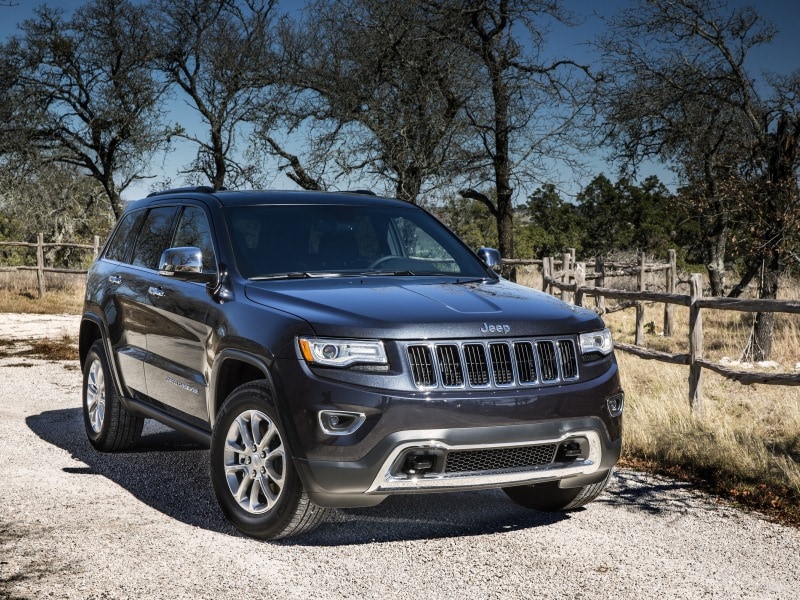Recent Articles
Popular Makes
Body Types
Which Jeep is Right for You?
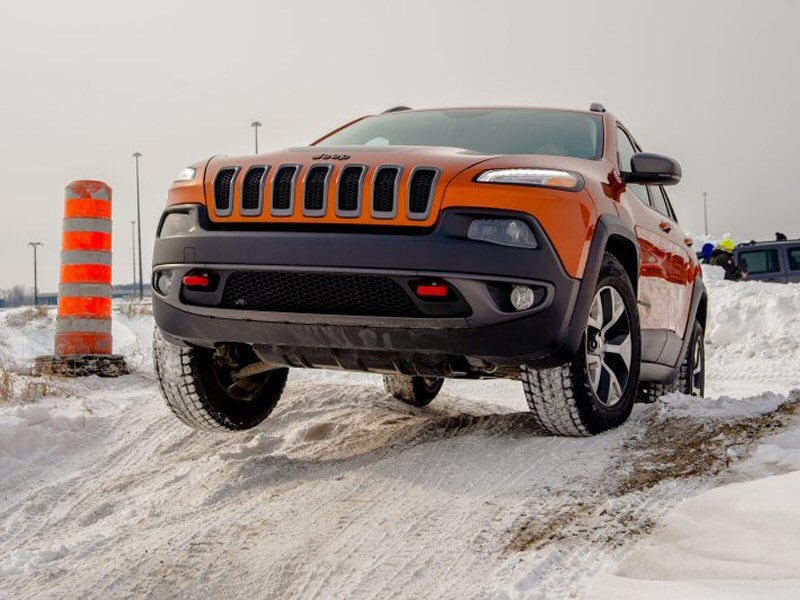
2015 Jeep Cherokee Trailhawk wheel off ground off-road
Buying a Jeep in the past was easy, since you only had three models to choose from; the Wrangler, Cherokee, and Grand Cherokee. Fast forward to today and the Jeep family has grown to include seven different models of various sizes and capabilities. With all of these models offering their own set of strengths and weaknesses, it's difficult to determine which one would be perfect for driving the kids to school and which is better suited for taking on the nearest off-road trail.
Fortunately, we've driven all of Jeep's lineup and know where each model performs best. Here, we've put the Jeep family under a microscope to determine which models work best for whom.
Jeep Patriot
The Jeep Patriot is the value leader in the lineup with a starting price of $16,695 for the base Sport model with front-wheel drive. Aside from the budget-friendly pricetag, the Patriot also has a couple of items that really set it apart from other compact crossovers. First are the looks. You could not mistake the Patriot for anything but a Jeep thanks to its boxy design. When equipped with the Freedom-Drive II, the Patriot also demonstrates impressive capability that's noticeably absent from other competitors in the segment. ll
Unfortunately, the Patriot also has a number of glaring problems. The two available four-cylinder engines really have to push to get the vehicle moving, and aren't the most refined. Cargo area is quite lacking with only 23 cubic feet of space available with the seats up, and 53.5 cubic feet with the seats folded. This is significantly less space than its segment competitor, the Honda CR-V, which offers 37.2 cubic feet with the seats up and 70.9 cubic feet with the seats down.
Who should buy the Patriot?
If we're honest, we recommend passing on the Patriot.
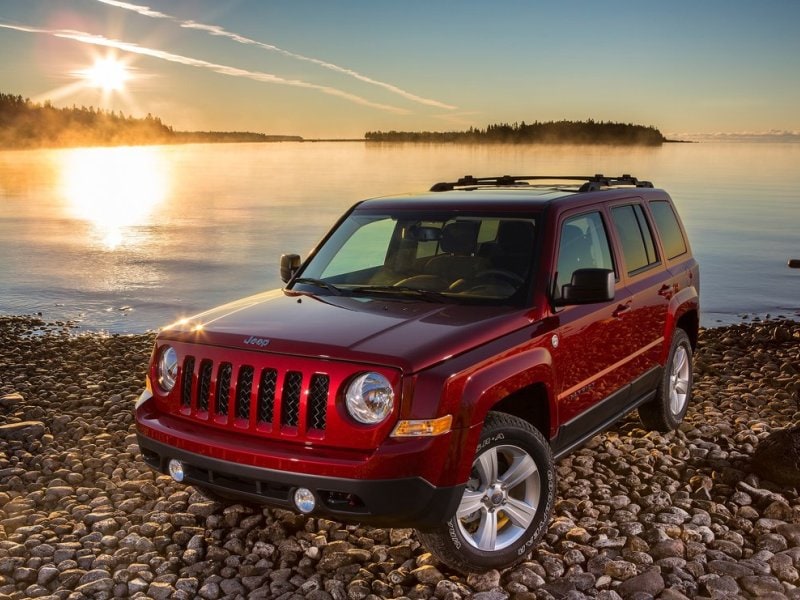
Jeep Renegade
The newest Jeep also happens to be the smallest. The Renegade is the brand's entrant into the blossoming subcompact crossover class. Unlike many of its competitors, the Renegade is built to go off-road. With two available four-wheel drive systems and the Selec-Terrain system which allows the vehicle to customize traction settings for various terrains, the Renegade is a very capable crossover. Another point in its favor are powerplant options, which include a choice of either a turbocharged 1.4L four-cylinder or a 2.4L Tigershark four-cylinder.
Appearance-wise, the Jeep DNA is heavily expressed. From the iconic seven-slot grille to the boxy shape, there is no mistaking the Renegade for anything other than a Jeep. Inside are some unique design traits such as topographic maps on the seats and 'Since 1941' emblazoned above the radio display. As for equipment, all Renegade models come with steering wheel controls, a USB port, a choice between a 60/40 or 40/20/40 split rear seats, 3 different UConnect infotainment systems, and an optional dual-panel open air roof.
Who should buy the Renegade?
If your commute is mostly on pavement and your only off-road excursion is the dirt road to the city park or the occasional snowy road, your best bet is either the Renegade Latitude or Limited as both offer an impressive amount of features for the price (if you want a bit more oomph, the Limited features the 2.4 as standard). Those who want to explore the great outdoors should look at the Trailhawk as that includes some improvements for off-road driving such as an 0.8 suspension lift, skid plates, and tow hooks.
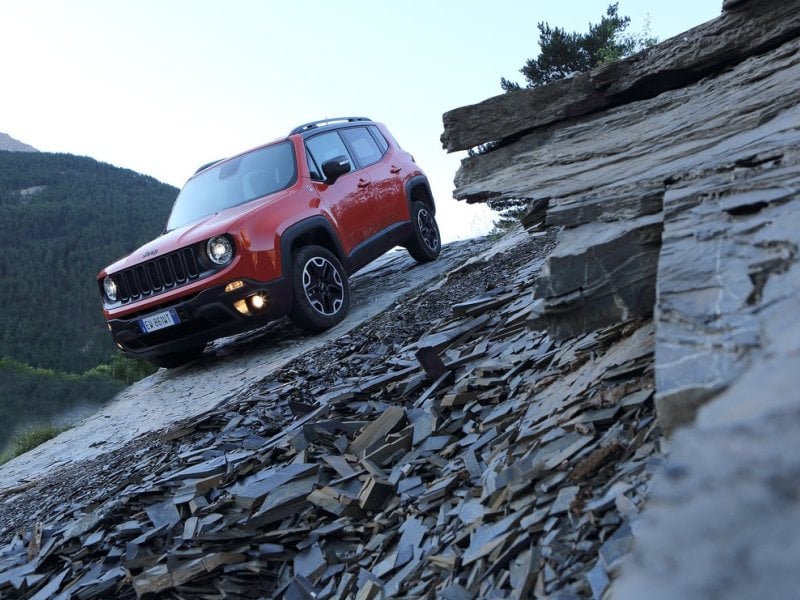
Jeep Compass
The Jeep Compass is the sister car to the Patriot, but it's aimed at a different audience. Where the Patriot is geared towards cost-conscious buyers who might go off-road, the Compass is designed for those who want a Jeep specifically suited for an urban environment. The overall look reflects this with an angled front end similar to the Jeep Grand Cherokee and a rounded rear-end - but don't think the Compass can't tackle the trail. When equipped with the Freedom Drive II all-wheel drive system, the Compass is capable of light trail-crawling.
Still, the Compass has many of the same problems as the Patriot. At the top of the list: poor performance and an abundance of noises coming from the available four-cylinder engines. Cargo space is also a disappointment with 22.7 cubic feet the seats up and 53.6 cubic feet with the seats down.
Who should buy the Compass?
Much like the Patriot, we would pass on the Jeep Compass.
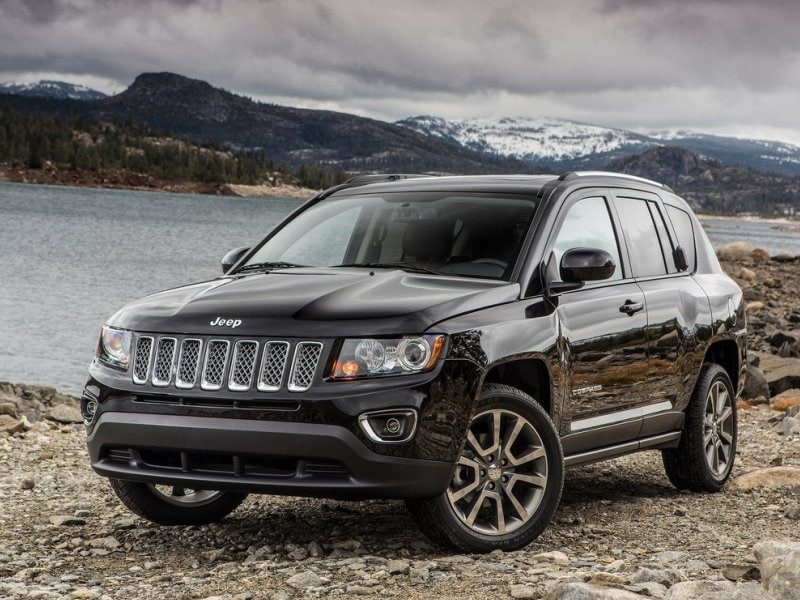
Jeep Wrangler/Wrangler Unlimited
The Jeep Wrangler and Wrangler Unlimited are the most iconic models in the Jeep lineup. The model can trace back its roots to the original Jeep that served in World War II. Just looking at the Wrangler, the basic shape has remained the same with the large seven slot grille, wide wheel flares, removable doors, and a choice of either a removable soft or hard top. The interior has a rugged feeling with grab handle on the passenger side, a number of storage spaces, and a washable interior with drain plugs. Those who want to take more people along for adventures should look at the Unlimited as it offers more space for rear seat passengers and their stuff.
Power comes from a 3.6L V6 with 285 horsepower that can either be paired to a six-speed manual or automatic. There are two four-wheel drive systems available for the Wrangler; first is Command-Trac which splits power 50/50 when four-wheel drive is engaged. Those looking for a more capable four-wheel drive system should go towards the Rubicon model with the Rock-Trac system. This system boasts a lower gear ratio and crawl to make it easier to go over certain obstacles such as rocks.
Who should buy the Wrangler/Wrangler Unlimited?
If your daily commute is mostly payment, then you should pass on the Wrangler and Wrangler Unlimited as the ride may be a bit rough and wind noise is very apparent. However if you are planning to tackle the trail, take a look at the Sport and Sport X models. More experienced off-roaders should check out the Rubicon model.
Jeep Cherokee
The Cherokee nameplate is second only to the Wrangler in terms of recognition. The Cherokee's historically boxy look and impressive capabilities are very well known within the off-road community, and when Jeep decided to resurrect the storied nameplate, many were hoping for a return of the model they knew and loved. Instead, Jeep introduced a new crossover with polarizing looks. While the new Cherokee model turned off Jeep fanatics, it has still become a big success for the brand.
The new Cherokee trades in its previously boxy looks for something a bit more modern. The overall shape is rounded and features such design traits such as two-tier headlights, a creased version of the seven-slot grille, and an oddly designed tailgate. Despite the looks, Jeep made sure the Cherokee met its steep terrain requirements. There is a choice of three different four-wheel drive systems which range from a system that kicks on when it detects slip to one that offers a locking differential and lower gearing to get you through some of the worst areas Mother Nature has on offer.
Power comes from either a 2.4L four-cylinder or a 3.2L V6. Both engines come paired to a new nine-speed automatic transmission. A word of warning: Jeep hasn't quite fixed all the bugs on the nine-speed automatic when paired with the 2.4L, and a number of owners are complaining about harsh shifts.
Who Should Buy the Cherokee?
For most buyers who are planning to stick to paved road most of time, either the Cherokee Latitude or Limited with the V6 are safe bets. If you have the hankering to travel the great wilds, then you want the Trailhawk with all of its off-road goodies such as meatier tires and tow hooks.
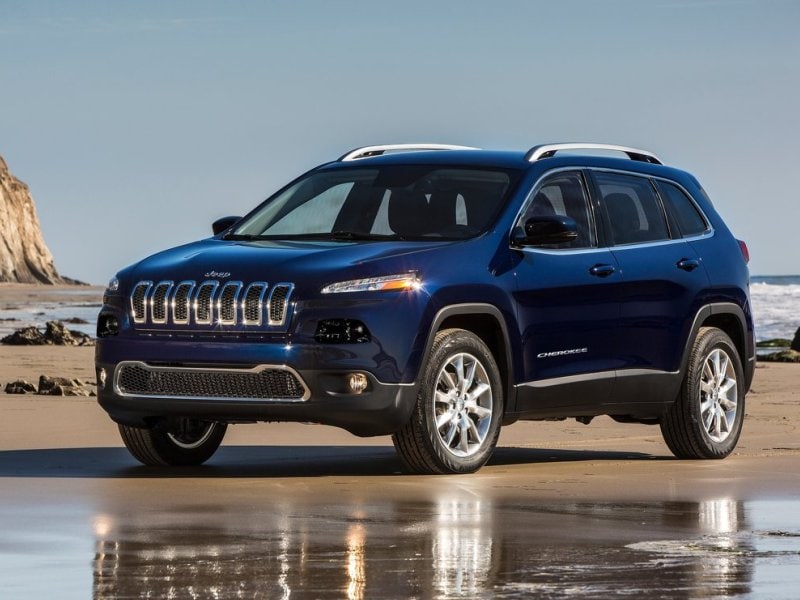
Jeep Grand Cherokee
Now onto the flagship, and possibly most well-rounded member of the Jeep family, the Grand Cherokee. First introduced in the early '90's, the Grand Cherokee was one of the first SUVs to trade in the body-on-frame architecture for a unibody. Many believed this change would make the Grand Cherokee less rugged than other Jeep models, but those fears were quickly allayed.
For this generation, Jeep worked on the interior and overall comfort. The results are impressive to say in the least. Interior materials have seen a noticeable improvement, while the design is similar to the aesthetic of higher-priced SUVs. Another thing Jeep does well in this version of the Grand Cherokee is attention to trim differentiation. From the base Laredo to the high-performance SRT, each trim has their own unique style.
As for power, the Grand Cherokee has four different engines. The base is a 3.6L V6 with 290 horsepower and 260 pound-feet. Next is the 3.0L EcoDiesel which provides 240 horsepower and impressive 420 pound-feet. Topping the standard Grand Cherokee engine lineup is the 5.7L HEMI V8 with 360 horsepower and 390 pound-feet of torque. The SRT version of the Grand Cherokee features a 6.4L HEMI V8 with 475 horsepower and 470 pound-feet of torque.
For off-roading, the Grand Cherokee is equipped with three different four-wheel drive systems - variable depending on engine and trim selection - along with a system that adapts drivetrain, steering, brake, and safety system settings to accommodate different driving environments.
Who Should Buy the Grand Cherokee?
Any of the Grand Cherokee models would be ideal to own, but for our money, we prefer the Limited for its balance between price and features. We would recommend the 3.6 V6 for daily commutes, the 3.0L EcoDiesel for long-distance driving or towing, and the 5.7L HEMI V8 for substantial towing.
